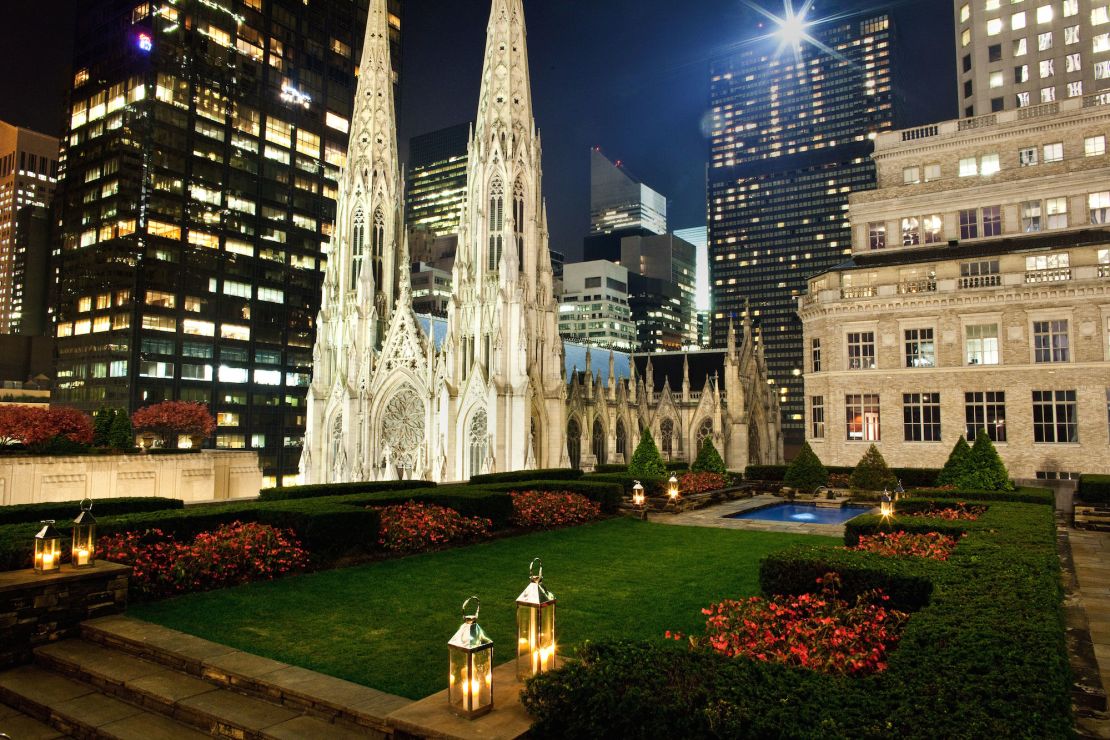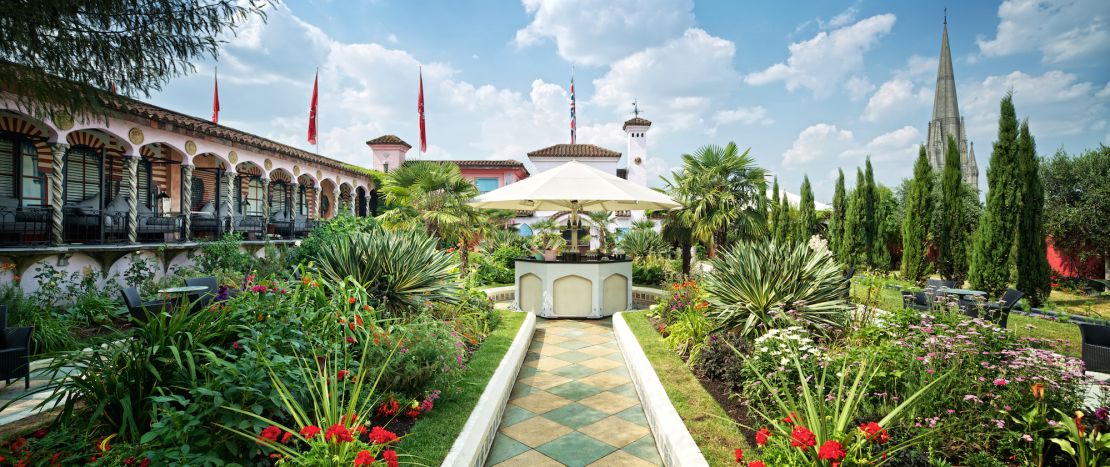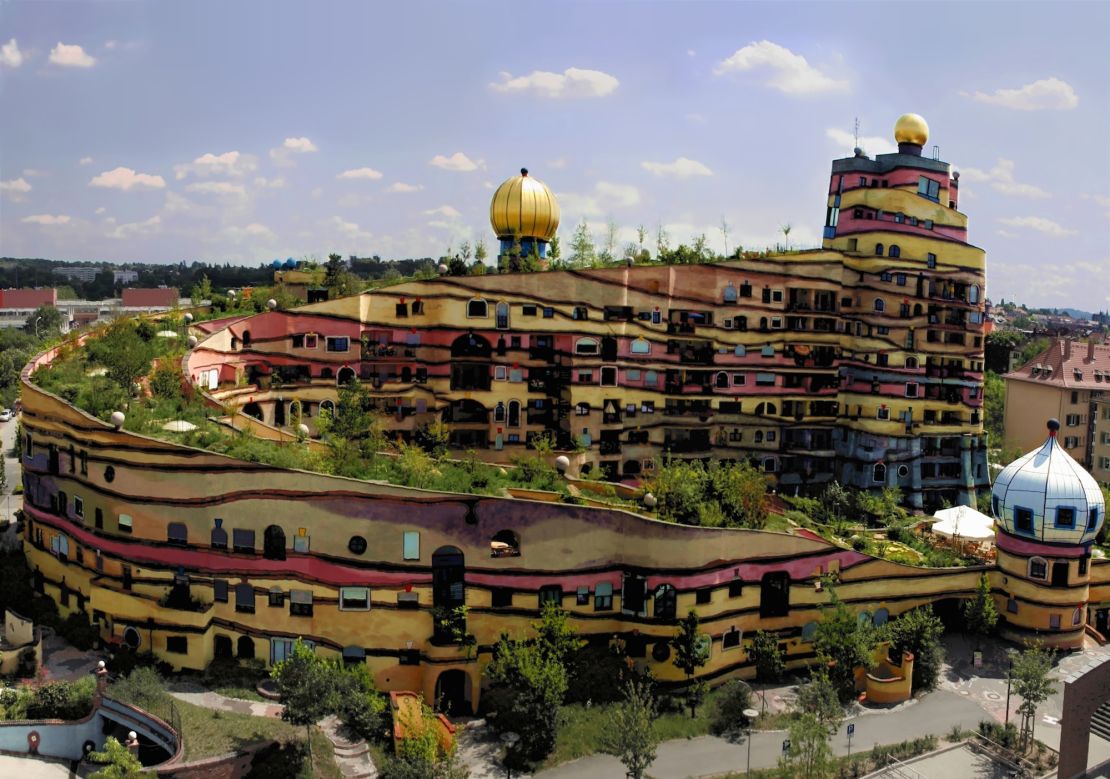High-rise gardens are on the rise, climbing faster than wisteria atop the latest apartment blocks and luxury hotels.
But most of these developments are private, leaving them accessible only to the well connected.
Hopes for a public paradise in the skies were raised by the “Walkie Talkie” Sky Garden in London, which made headlines when it opened the “highest roof garden in Europe” earlier this year.
Sadly, the viewing platform is more rockery than sky park, albeit one with a fantastic vantage point 560 feet (170 meters) above the city.
For true urban jungle experiences that’ll oxygenate your soul, here are 10 other leafy green sky gardens:
1. ACROS (Fukuoka, Japan)
Rising like an overgrown Inca pyramid out of downtown Fukuoka, the 14-story ACROS building was designed by Argentine architect Emilio Ambasz.
Each level reveals natural wonders normally found in the forest, from glossy ponds to waterfalls.
The entire project contains more than 50,000 plants and trees.
On the way to the top visitors pass through a vast atrium, which extends into a semicircle of glass paneling. Inside are exhibition spaces, shops, offices and a symphony hall.
ACROS Fukuoka, 1-1-1 Tenjin, Chuo-ku, Fukuoka, Japan; +81 092 725 9111; opening times vary, typically 9 a.m.-6 p.m., weekends and holidays 10 a.m.-4 p.m.
2. Rockefeller Center Roof Gardens (New York)

Though this one isn’t regularly open to the public, we couldn’t leave it off the list given it’s the urban gardens archetype, inspiring properties like Kensington on London and Oakland’s Kaiser to follow suit.
Instantly recognizable thanks to movies like “Spiderman” (2002) and “Fantastic Four” (2005), the Rockefeller Center Roof Gardens opened in 1935 and include five terraces designed by pioneering landscape architect Ralph Hancock.
The entire project took two years to complete and included 3,000 tons of earth, 500 tons of bricks, 100 tons of stone, 2,000 trees and shrubs.
The Rockefeller Center Roof Gardens are occasionally added to the Open House New York weekend – worth keeping an eye out for if you’re in New York October 17 and 18.
The alternative is to book an event – wedding receptions are particularly popular.
Rockefeller Center Roof Gardens, 620 Fifth Ave., at 50th Street, New York; +1 212 593 9499
3. Namba Parks (Osaka, Japan)
Visitors ascend gradually, picking a path through rock falls and thickets, over streams and under waterfalls, mindful of the cliffs that fall into the canyon below.
At the summit they take in the view – and that’s when it all comes flooding back.
There are no mountain ranges, no rivers or plunging valleys – this is Namba Parks, a shopping mall in the middle of Osaka, Japan’s second largest city.
Designed by iconic American architect Jon Jerde and completed in 2003, this multi-story pasture camouflages glittering boutiques where fashionable citizens come to graze and ramble.
There’s even a plot to grow vegetables.
Namba Parks, 2-10-70 Nambanaka, Naniwa-ku, Osaka-shi, Osaka, Japan; +81 6 6644 7100; open daily, 11 a.m.-9 p.m.
4. Kaiser Roof Garden (Oakland, California)
Industrialist Edgar Kaiser actually did put the “park” into car park – or, more accurately, on top of it.
The Oakland, California, native was so enamored with Rockefeller’s rooftop backyard in New York that he built an enormous 14,100-square-meter green roof above his own eponymous headquarters in the 1960s.
More Central Park than car park, its “water feature” is really a small lake with fountains and a wooden bridge.
Lawns spread out from the water’s edge to the tree-lined borders, making it large enough for a game of five-a-side.
Better still, anyone can visit – just press “RG” in one of the parking garage elevators.
Kaiser Roof Garden, 300 Lakeside Drive, Oakland, California; +1 510 834 3575; open Monday-Friday, 8 a.m.-5 p.m.
5. Kensington Roof Gardens (London)

This palatial green terrace in London’s Kensington district is the Downton Abbey of roof gardens.
Created by Welsh landscape designer Ralph Hancock from 1936-1938, this 6,000-square-meter space is filled with fountains, fronds of palm and fern, flowers and even flamingos.
Hancock imported rock from Pennsylvania and planted 500 species of plants to fill the gardens’ three themed spaces – Spanish, Tudor and English.
Seven of the original trees survive to this day.
Kensington Roof Gardens, 99 Kensington High St., London; +44 0207 937 7994; tours are free but it’s worth calling ahead to book as the gardens are often rented out for private events
6. High Line Park (New York)
Commuting up the West Side of Manhattan has never been easier – it’s literally a stroll in the park thanks to the High Line.
The aerial greenway runs along a section of the New York West Line railroad, repurposed in 2006, and carries walkers and joggers 1.5 miles (2.3 kilometers) from the Meatpacking District, across Chelsea, to the West Side Yard.
The park pays homage to the wild flora that colonized the line after it was abandoned in the 1980s. There are sun loungers, meadows, trickling brooks and cinematic views of the Hudson River.
High Line Park, New York; +1 212 500 6035; open daily 7 a.m.-7 p.m. in winter, 7 a.m.-11 p.m. in summer
7. Barbican Conservatory (London)
The Barbican in London is home to Europe’s largest arts center, its concert hall, theaters and galleries renowned for showcasing the best in contemporary culture.
Less well known, even to regulars, is the enormous conservatory on the roof. Split over two levels, it’s the second largest glasshouse in London, after Kew Gardens, and a sanctuary to more than 2,000 varieties of tropical plants and exotic residents like terrapins and koi carp.
Barbican Conservatory, Silk Street, London; +44 20 7638 4141; open every Sunday and on bank holidays, 11 a.m.-5 p.m., entry is free
8. Waldspirale (Darmstadt, Germany)

Roof gardens are, by their nature, different. Few, however, stand out like the Waldspirale in Darmstadt, Germany.
Completed in 2000, the apartment building and its roof terrace were the final flourish in the career of one of Austria’s most famous artists, Friedensreich Hundertwasser, a man who believed straight lines were the “Devil’s tools.”
True to form, his Waldspirale (“forest circle”) shuns conventional architecture. This U-shaped ramp of a building is topped with shrubs, grasses and “tree tenants” (as Hundertwasser called them) as it spirals 12 floors to a cafe where visitors can sip weissbier and admire the peculiar surroundings.
Waldspirale, 64289 Darmstadt, Darmstadt, Hesse, Germany; +49 06151 2815755
9. Gardens by the Bay (Singapore)
We’ve all heard of garden cities, but what about a “city in a garden”? That’s precisely what Singapore has pledged to become. With the opening of Gardens by the Bay in 2012, it’s not far off.
A kind of horticultural theme park, Gardens by the Bay’s premier attraction is Cloud Forest, one of two enormous conservatories that dominate the edge of Singapore’s Marina Reservoir.
Encased within is a 35-meter-tall tower of exotic vegetation, shrouded in mist, and the world’s highest indoor waterfall.
Visitors take an elevator to the edge of the falls before descending via walkways through nine zones of tropical habitat. Surrounding the forest structure is a grove of Supertrees – 50-meter-high, alien-looking towers that also have high walks suspended between them for treetop views of the gardens.
Gardens by the Bay, 18 Marina Gardens Drive, Singapore; +65 6420 6848; open daily 5 a.m.-2 a.m., free entry; to book tickets for Cloud Forest visitgardensbythebay.com; open daily, 9 a.m.-9 p.m.
10. Torre Guinigi (Lucca, Italy)
Despite being the home of opera composer Puccini, Lucca is the unsung star of Tuscan cities, overshadowed by the Renaissance majesty of Florence and the Palio perfection of medieval Siena.
But when it comes to gardens, the others can’t compete.
Lucca’s centerpiece is the Torre Guinigi, instantly recognizable for its crown of holm oaks, planted as a statement of nobility by the Guinigi family in the late 1300s.
Today the surviving canopy provides shade from the Mediterranean sun, particularly welcome after the prodigious climb to get there.
Torre Guinigi, Via S. Andrea, Lucca, Italy; +39 0583 583086; open 9:30 a.m.-4:30 a.m. year round; tower tickets cost 4 euros
World’s 10 most livable cities in 2016












